Understanding Acne in the Youngest Populations
Acne is often viewed as a teenage concern, but its prevalence and impact begin much earlier in childhood. This article delves into the detailed statistics on acne prevalence in children, examines the age distribution across various pediatric groups, and explores the epidemiological traits and influencing factors of acne in kids and adolescents. By understanding these patterns, we can better appreciate the challenges children face and the importance of timely diagnosis and management.
Prevalence of Acne in Childhood: An Overview
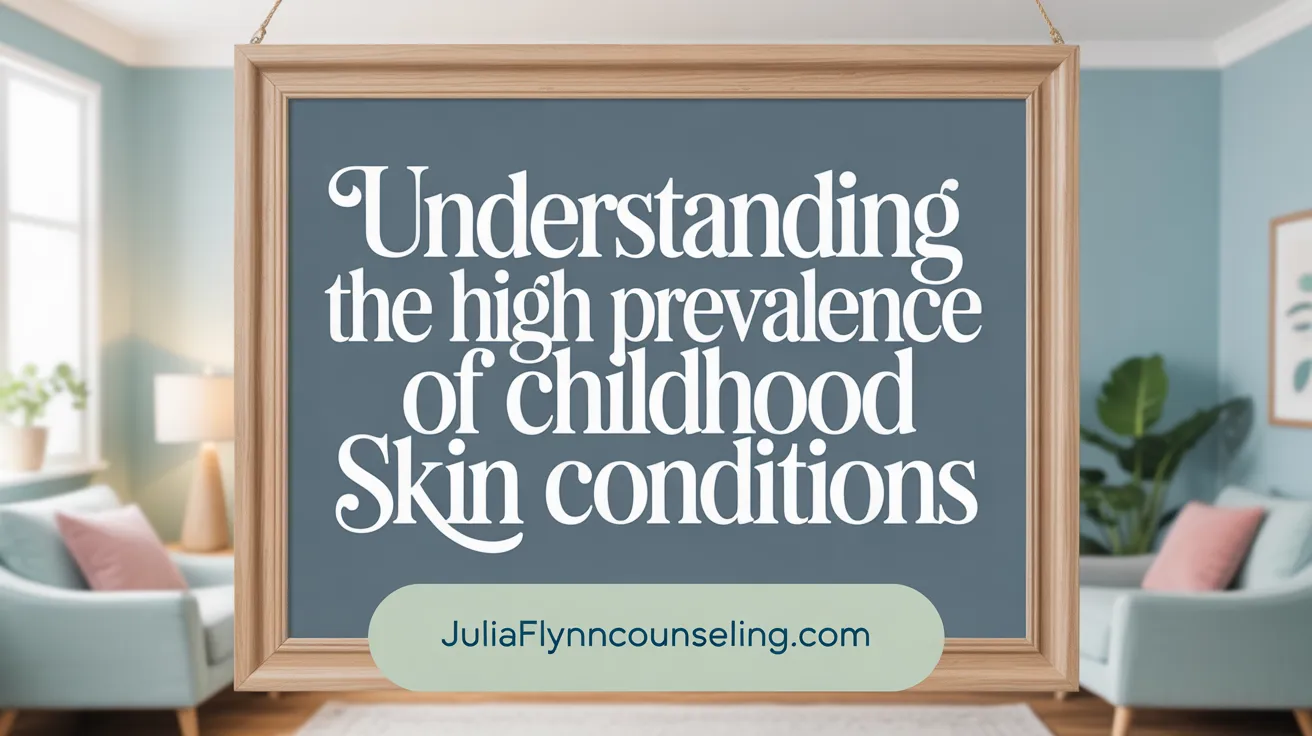
What is the prevalence of acne in children?
The occurrence of acne among children varies depending on age, gender, and specific populations. In general, acne is highly prevalent during adolescence, with studies indicating that approximately 85% to 90% of teens experience it at some point.
In children aged 7 to 12 years, the annual rate of new cases is about 58 per 10,000 person-years. This rate increases significantly with age within this group, from just 4.3 in 7-8-year-olds to a striking 144.3 in 11-12-year-olds, signaling that older children are more susceptible.
Gender differences are notable. Females tend to have a higher incidence, with an annual rate of 89.2 per 10,000 person-years compared to 28.2 in males. This gender disparity becomes evident even in prepubertal years, where most cases occur in girls (75%).
Among adolescents aged 12-20, the prevalence reaches approximately 93.2%, with a slightly higher rate in boys (94.4%) than in girls (92%). Around 14% to 17% of these adolescents develop moderate to severe acne, with severity increasing with age and family history.
The development of acne before puberty is less common but still significant, with prepubertal acne accounting for about 3.5% of all cases studied. Most of these prepubertal cases are severe and involve inflammatory lesions on the face and back.
In summary, acne prevalence in children is substantial, particularly in the mid-to-late childhood and adolescence. The condition is more common in girls during prepuberty and tends to escalate with age, affecting nearly all teenagers and a sizable segment of younger children.
Prevalence Rates in Different Age Groups and Genders
| Age Group | Incidence Rate (per 10,000 person-years) | Percentage of Cases | Most Common Features |
|---|---|---|---|
| 7-8 years | 4.3 | Less common, milder | Comedones, early papules |
| 9-10 years | 24.4 | Increasing, more frequent | Inflammatory lesions |
| 11-12 years | 144.3 | Most common age for new onset | Severe, often inflammatory |
| Overall (12-20 years) | ~93% prevalence | High, with some moderate/severe cases | Facial, back involvement |
| Girls (Prepubertal) | 75% of prepubertal acne | Usually more severe | Inflammatory lesions, scars |
| Boys (Adolescents) | ~85% in late puberty | Slightly higher prevalence | Facial, back, chest |
This overview highlights the widespread nature of acne, affecting children in diverse ways based on age, sex, and familial factors.
Age Distribution Patterns in Childhood Acne
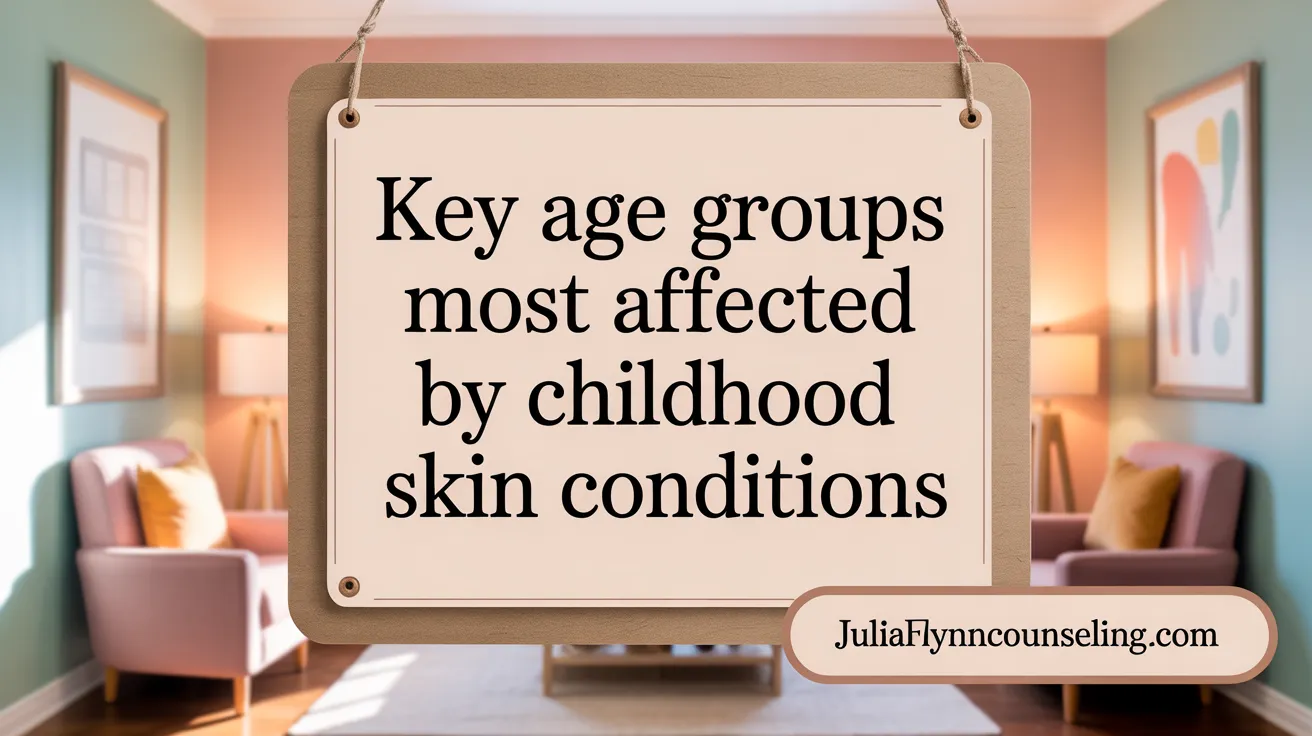
Which age groups are most commonly affected by childhood acne?
Childhood acne predominantly affects children in the preadolescent age range of 7 to 12 years old. Data shows that the incidence rate increases significantly with age within this group, reaching as high as 144.3 per 10,000 person-years in children aged 11 to 12 years. Most cases of prepubertal acne tend to be severe (about 33%) and present with inflammatory lesions, including comedones, papules, and sometimes scars.
Early onset acne, characterized by comedones and papules, is common in this age group. The face remains the most affected area, with nearly all cases (98.7%) showing facial involvement, followed by the back which is affected in about 79.2% of cases. This pattern indicates that acne in children aged 7–12 years often mimics adolescent types but still tends to be milder.
While neonatal and infantile acne can occur earlier during the first months of life, these are less frequent and typically resolve before the age of 7. The transition from childhood to adolescence involves a sharp increase in acne prevalence, driven mainly by hormonal changes during puberty that activate sebaceous glands. Adolescents, especially those aged 13 to 19 years, experience the highest prevalence, with rates of 85% in late pubertal boys and 15% in girls, expanding the scope of affected age groups.
In summary, children aged 7 to 12 years are most affected by childhood acne, with severity and characteristic features evolving as they approach adolescence. Recognizing this age distribution aids in timely diagnosis and treatment to prevent long-term impacts such as scarring.
Incidence Trends and Gender Differences in Pediatric Acne
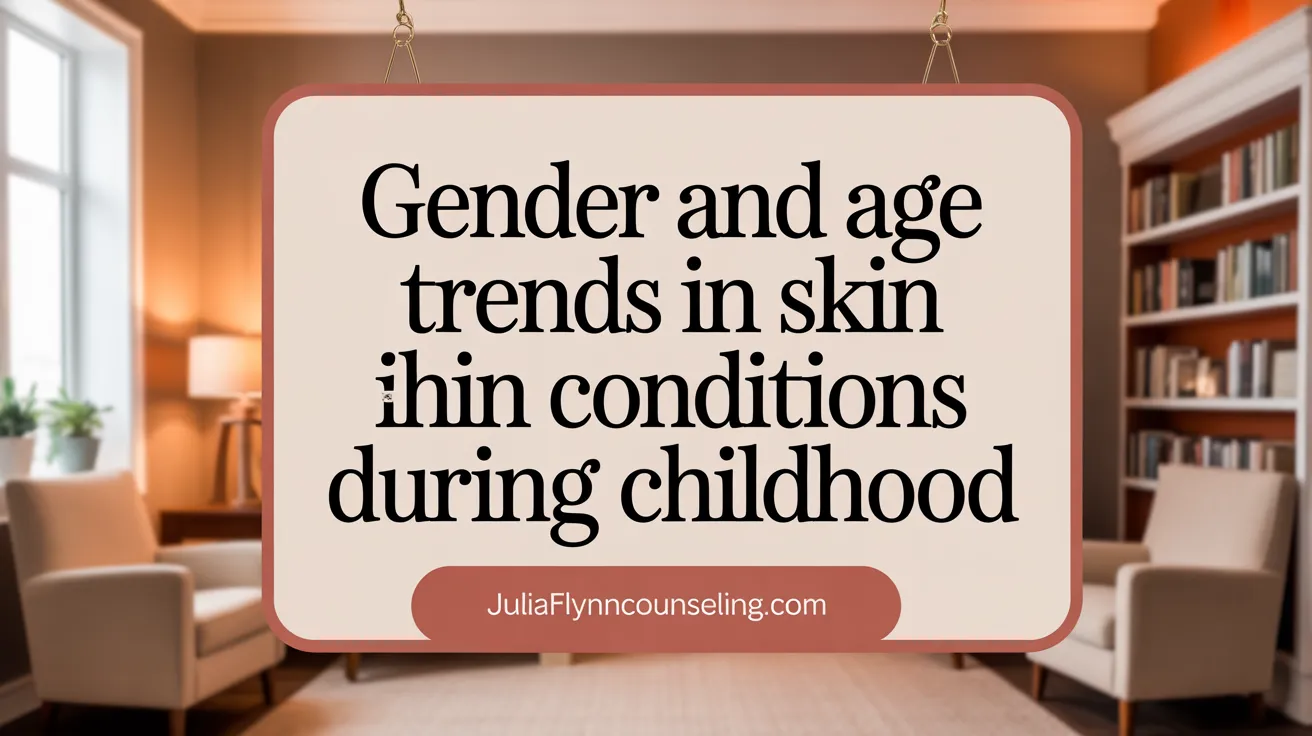
What are the annual incidence rates of acne in children aged 7-12 years?
The annual age- and sex-adjusted incidence rate of acne in children aged 7-12 years is approximately 58.0 per 10,000 person-years. This rate reflects how common new cases of acne are in this age group each year.
How does the incidence of acne differ between females and males?
Interestingly, the rate of acne is significantly higher in females compared to males. Female children have an incidence rate of about 89.2 per 10,000 person-years, whereas males have a lower rate of approximately 28.2 per 10,000 person-years. This difference underscores a notable gender disparity in the occurrence of acne during childhood.
Does the incidence of acne increase with age within this group?
Yes, the occurrence of acne tends to rise as children get older within the 7-12 year age range. For children aged 7-8 years, the incidence is around 4.3 per 10,000, which increases to about 24.4 in the 9-10 year age group, and jumps markedly to roughly 144.3 in 11-12-year-olds. This pattern indicates that acne becomes progressively more common as children approach adolescence, likely due to hormonal changes and increased sebaceous activity.
Body Mass Index and its Link to Childhood Acne
What factors influence the occurrence of acne in pediatric populations?
In children and adolescents, acne formation is largely driven by hormonal surges during puberty, which stimulate increased activity of the sebaceous glands and lead to oil overproduction. Genetic factors are also influential, with a family history of acne elevating the risk.
External influences, such as the use of comedogenic skincare or hair products, high temperatures, sweating, and skin irritation, can aggravate acne. Certain medications—like corticosteroids and antiseizure drugs—may trigger or worsen skin lesions.
Lifestyle factors also contribute; diets rich in sugar, oily foods, and dairy, coupled with stress and poor hygiene, may impact acne severity. The colonization of Cutibacterium acnes bacteria on the skin is a central factor, promoting inflammation and making the condition more severe.
Understanding these influences helps grasp why some children develop acne early and how environmental factors interplay with biological predispositions.
How does BMI relate to the occurrence and severity of acne?
Children with acne tend to have higher body mass indices (BMI). Data shows that the median BMI percentile for children with acne is 75, compared to 65 for children without acne, indicating that increased BMI is associated with the condition.
A notable portion—16.7%—of children with acne have a BMI in the 95th percentile or higher, versus 12.2% among controls. This suggests a correlation between higher BMI and an increased risk of developing acne.
More importantly, BMI not only correlates with acne occurrence but also predicts the severity. Each 5 kg/m^2 increase in BMI raises the odds of systemic medication use by 43%, emphasizing that excess weight can indicate more severe or treatment-resistant acne.
What are the statistical differences between cases and controls?
Statistical analysis reveals significant differences between children with acne and those without. The higher median BMI percentile in children with acne (P<.001) and the increased prevalence of BMI ≥95th percentile (P=.01) highlight this association.
Furthermore, the probability of requiring systemic therapy increases with rising BMI (odds ratio=1.43 per 5 kg/m^2), emphasizing that pediatric patients with higher BMI are more likely to experience severe acne necessitating potent treatments.
| Factor | Children with Acne | Controls | Significance | Notes |
|---|---|---|---|---|
| Median BMI percentile | 75 | 65 | P<.001 | Higher in acne children |
| BMI ≥95th percentile | 16.7% | 12.2% | P=.01 | Increased prevalence in acne cases |
| Odds of systemic medication use | Increased with BMI | — | P=.015 | Higher BMI linked to more aggressive treatments |
This data underscores the importance of considering BMI as a factor not only in the occurrence of childhood acne but also in its management and prognosis.
Characteristics and Severity of Prepubertal Acne

What are the epidemiological characteristics and trends of childhood acne?
Prepubertal acne, although less common than adolescent acne, still affects a significant number of children, with a prevalence of approximately 3.5% in studied populations. It predominantly occurs in females, accounting for about 75% of cases, and usually presents with severe manifestations. Most children exhibit inflammatory lesions such as papules and pustules, and the face remains the primary site affected in nearly all cases.
The severity tends to escalate with age and pubertal development. Notably, about 33% of prepubertal acne cases are classified as severe according to the GEA scale, and a high percentage (95.2%) display inflammatory lesions, with many presenting comedones and scars. The condition often begins on the face (98.7%) and can involve other areas such as the back, affecting up to 79.2%.
Factors influencing the course include bacterial colonization, particularly a predominance of Cutibacterium acnes phylotype IA1, and external factors like diet and lifestyle. Studies show that early and aggressive management is vital to prevent progression, scarring,and long-term psychological effects.
Gender predominance in prepubertal acne?
Prepubertal acne is more common in female children, surprisingly accounting for 75% of all cases. This higher incidence in females might be related to hormonal differences or genetic predispositions. In general, the condition tends to be more severe and inflammatory in girls, with some studies reporting a greater likelihood of scarring and persistent lesions.
This gender disparity underscores the importance of considering hormonal influences even before puberty, as elevated androgens can stimulate sebaceous activity. Recognizing these patterns helps tailor age-appropriate and gender-sensitive treatment approaches.
Lesion types and common affected areas?
Children with prepubertal acne typically present with a combination of inflammatory and non-inflammatory lesions. Comedones are remarkably prevalent, observed in approximately 98% of cases, making them the most common lesion type. Papules are also common, seen in 94% of children, often co-occurring with comedones.
Severe cases are characterized by inflammatory nodules and cysts, with about one-third classified as severe based on clinical scales.
The face is overwhelmingly affected, involved in nearly all cases (98.7%), followed by the back, which is affected in about 79.2%. The distribution indicates the systemic nature of the disorder, involving areas rich in sebaceous glands.
Microbiological findings in prepubertal acne
Research demonstrates a high prevalence of Cutibacterium acnes phylotype IA1 (belonging to CC18 subgroup) among affected children. This bacterial strain is associated with more inflammatory and severe acne forms. The microbiological milieu plays a central role in acne pathogenesis, contributing to inflammation and lesion development.
Targeted therapies that address bacterial colonization alongside hormonal and skincare management can improve outcomes. Early intervention is crucial, especially when microbiological profiling indicates resistant or pathogenic strains.
| Aspect | Data | Additional Notes |
|---|---|---|
| Prevalence | 3.5% in children | Mostly females and severe cases |
| Gender difference | Primarily in females (75%) | Potential hormonal influence |
| Lesion types | Comedones (98%), papules (94%) | Most common early lesions |
| Affected areas | Face (98.7%), back (79.2%) | Sebaceous-rich zones |
| Microbiology | Predominant Cutibacterium acnes IA1 | Linked to severity |
Understanding these characteristics is essential for clinicians to diagnose, classify, and treat prepubertal acne effectively, minimizing psychological impacts and long-term scarring.
Pubertal Hormonal Influence and Acne Development
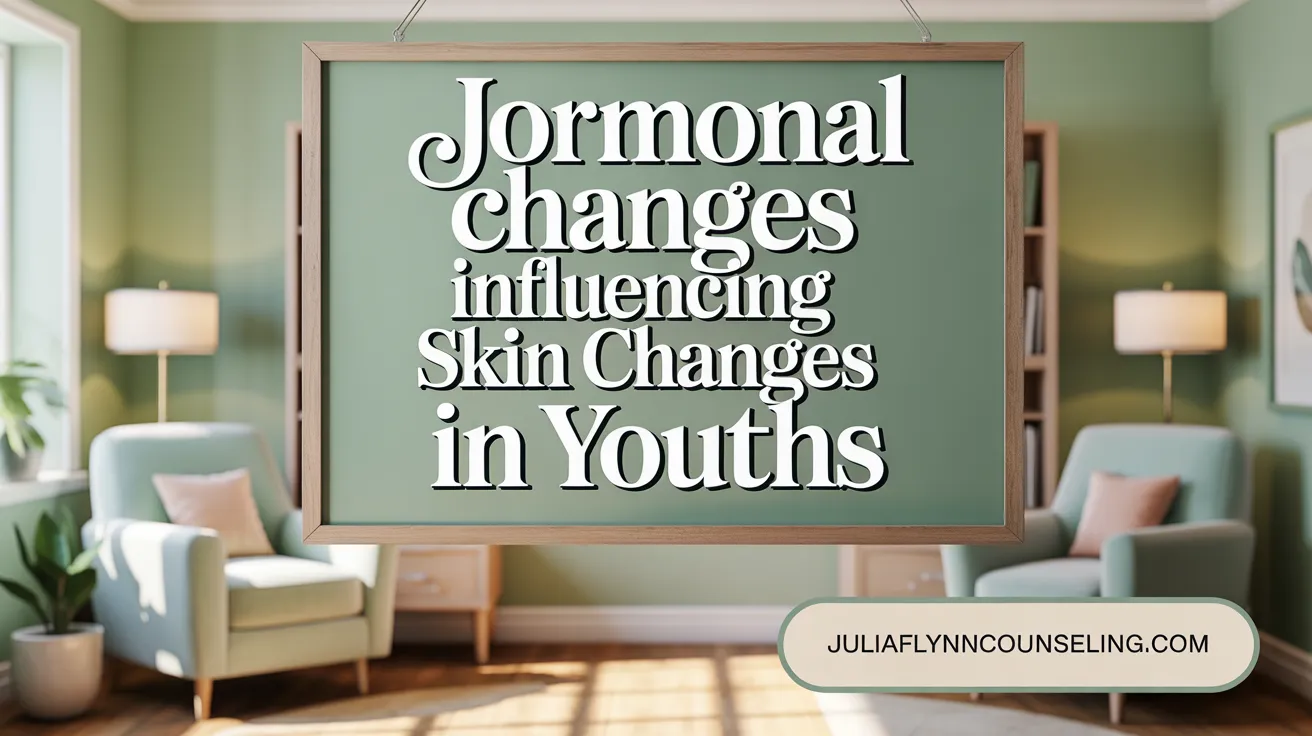
What factors influence the occurrence of acne in pediatric populations?
The development of acne in children and adolescents is primarily driven by hormonal changes that occur during puberty. Elevated levels of androgens, such as dihydrotestosterone (DHT) and testosterone, stimulate the sebaceous glands to produce more sebum, which contributes to the formation of acne lesions.
In particular, the severity and prevalence of acne are closely related to Tanner stages of pubertal development. During later Tanner stages G4 and G5 in males, and B4 and B5 in females, acne becomes more common and severe. This correlates with increased hormonal activity as the body undergoes physical maturation.
Sex differences are evident in hormonal profiles; males generally experience a later and more pronounced rise in androgens, leading to higher prevalence and severity of acne in boys, especially in late pubertal stages. Conversely, females tend to develop acne at slightly earlier ages, often influenced by hormonal fluctuations related to menstrual cycles.
Several factors influence pediatric acne beyond hormones. Genetic predisposition, indicated by parental history, significantly increases the risk and severity. External factors, such as using pore-clogging skin products or hair care items, and environmental influences like high humidity, sweating, and skin irritation, can exacerbate acne.
Certain medications, including corticosteroids and seizure drugs, can induce or worsen acne. Lifestyle elements such as diet rich in sugars and oily foods, stress, and poor hygiene also contribute, albeit to a lesser degree.
Bacterial colonization by Cutibacterium acnes plays a crucial role by promoting inflammation within clogged pores. The interaction of hormonal, genetic, environmental, and microbial factors creates a complex network influencing acne occurrence and severity in pediatric populations.
Severity Variation of Acne Across Childhood and Adolescence
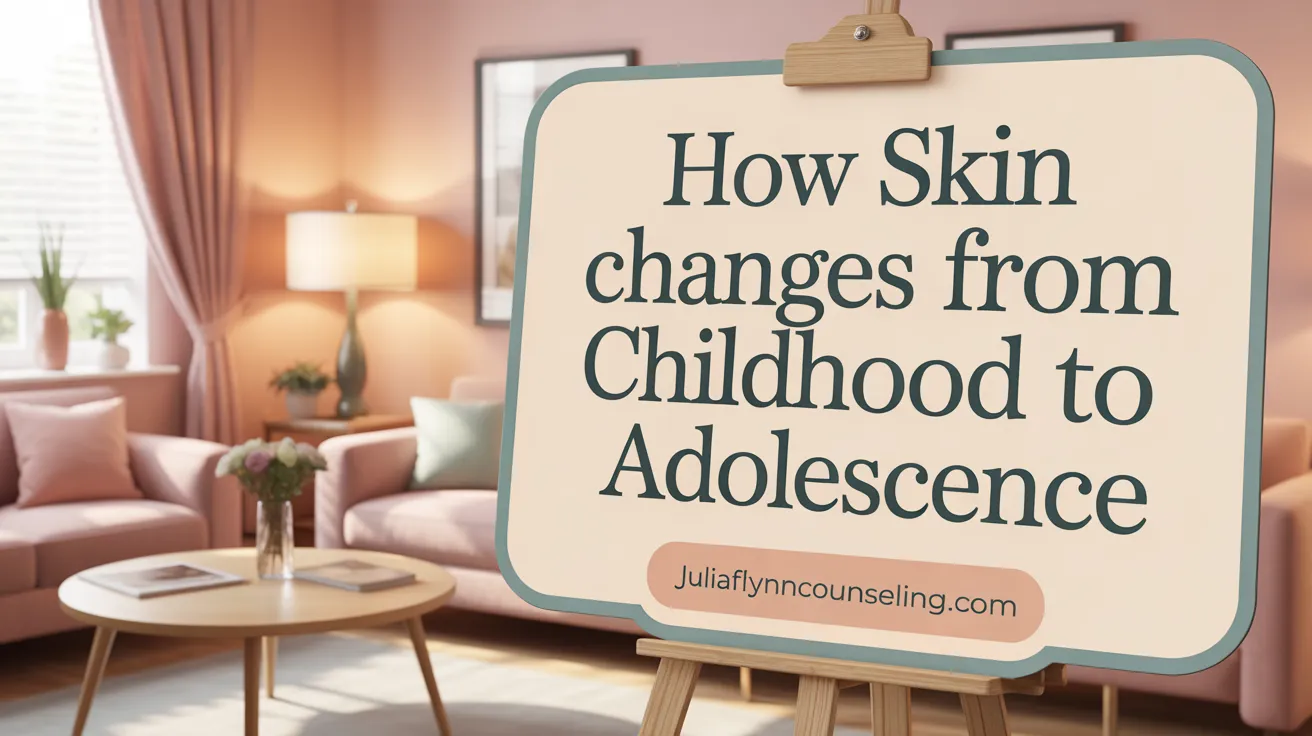
How does acne severity vary with age among children and adolescents?
Acne severity tends to change as children grow, generally becoming more severe during the teenage years. This pattern is mainly driven by puberty-related hormonal shifts, especially the increase in androgens, which stimulate the sebaceous (oil) glands. During adolescence, often between ages 11 and 20, severe forms such as pustules, nodules, and cysts are more common. The data show that around 14% of teenagers experience moderate to severe acne, with severity increasing with age.
In children under 7 years old, acne is quite rare but can sometimes occur due to hormonal or endocrine issues. When acne does appear in this age group, it usually presents as mild, comedonal types and is often transient.
Pre-adolescent children, aged 7 to 12, typically develop mild acne characterized mainly by comedones and papules. As they approach adolescence, the condition can intensify, with more inflammatory lesions forming.
Post-adolescence and into adulthood, the prevalence of severe acne decreases, but some continue to experience persistent or recurrent acne, often influenced by hormonal factors or medications.
The severity of acne also correlates with psychological impacts and treatment complexity, emphasizing the importance of early diagnosis and intervention to prevent long-term scarring and emotional distress.
Table 1 summarizes prevalence and severity of acne across different age groups:
| Age Group | Common Severity | Typical Lesions | Additional Notes |
|---|---|---|---|
| Under 7 years | Rare, usually mild | Comedones | Possible endocrine causes |
| 7-12 years | Mild (Grade 1) | Comedones, papules | Early puberty signs |
| 13-20 years | Mild to severe | Papules, pustules, cysts | Peak severity during teenage years |
| Over 20 years | Variable | Persistent or recurrent | Hormonal influences, medications |
Understanding these trends helps in choosing age-appropriate treatments and counseling young patients about their condition.
Genetic and Familial Influences on Acne in Children

What factors influence the occurrence of acne in pediatric populations?
The development of acne in children is influenced by a combination of hormonal, genetic, and environmental factors. During puberty, increases in androgen hormones stimulate excess sebum production, which can clog pores and lead to acne.
Genetics plays a significant role in determining which children are more likely to develop acne and how severe it may become. Studies show that having a family history, especially maternal history of acne, increases the risk. Children with a mother who had acne are nearly three times more likely to develop severe acne themselves.
External factors can also aggravate acne. Use of pore-clogging cosmetics, exposure to high humidity, sweating, and clothing friction can worsen skin condition. Certain medications, such as corticosteroids, can induce or intensify acne.
Lifestyle choices, including diets high in sugar or oily foods, poor hydration, stress, and inadequate skincare routines, impact acne severity. Furthermore, bacterial colonization by Cutibacterium acnes is a crucial factor in inflammation and lesion formation.
How does family history influence acne severity?
Genetic predisposition significantly correlates with the severity of acne. Children with a familial background of severe acne are more likely to experience pronounced symptoms and require aggressive treatment. For example, having a mother with a history of acne increases the odds of severe acne, with an odds ratio around 2.8.
The influence of genetics extends beyond mere occurrence, impacting how a child's skin responds to and recovers from acne. Family history serves as a strong predictor for both the likelihood of developing acne and its potential course.
Interaction with other risk factors
Genetic susceptibility interacts with other risk factors such as hormonal levels, external triggers, and microbial colonization. This interplay can lead to more persistent or resistant forms of acne in children.
Children with a genetic predisposition should be monitored closely during adolescence, especially if other risk factors are present, to enable prompt and appropriate treatment.
| Aspect | Influence | Additional Notes |
|---|---|---|
| Genetic predisposition | Increases likelihood and severity | Maternal history is a strong indicator |
| Hormonal influence | Heightened and worsens acne | Elevated androgens stimulate excess sebum |
| External factors | Can worsen condition | Cosmetics, clothing, environmental exposures |
| Microbial factors | Contribute to inflammation | Cutibacterium acnes colonization |
| Lifestyle factors | Modulate severity | Diet, stress, hygiene |
Understanding the genetic and familial impacts on acne emphasizes the importance of personalized approaches for prevention and management in children.
Common Types and Distribution of Acne Lesions in Children and Adolescents
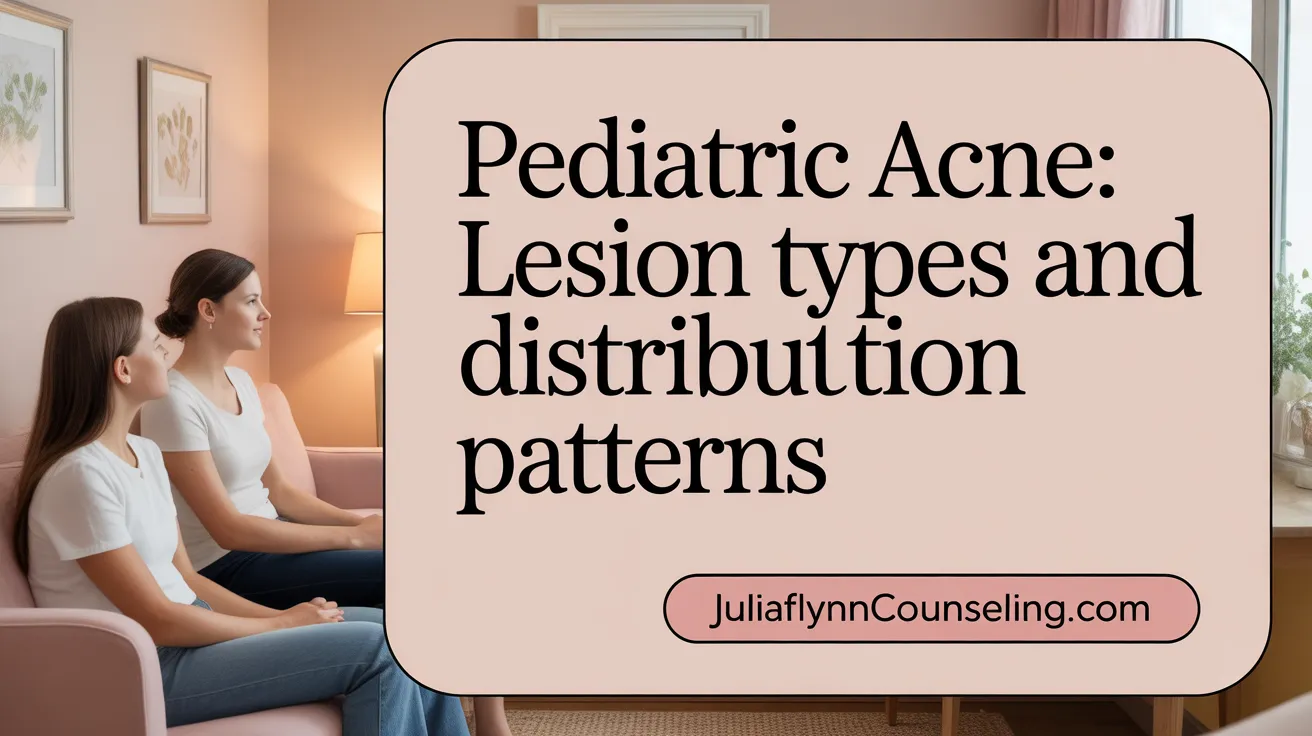
Prevalence of acne vulgaris
Acne vulgaris is the most common skin condition affecting children and adolescents, with prevalence rates reaching up to 93.2% among high school pupils aged 12-20 years. It often begins around the age of 16, and over half of affected teenagers experience scarring. In young children, preadolescent acne is relatively less common but typically presents with mild lesions.
Common lesion types: comedones, papules, inflammatory
The characteristic lesions of pediatric acne include comedones, papules, and inflammatory nodules. Comedones appear in nearly all cases, observed in about 98% of children with acne, making them the most prevalent early lesion. Papules are also frequent, seen in approximately 94% of cases.
Severe acne, though less common, tends to involve more inflammatory lesions and can lead to significant scarring. Severity correlates with a greater impact on self-esteem and may necessitate systemic medication use. Among early lesions, comedones and papules typically mark the initial stages, highlighting the importance of early diagnosis and treatment.
Typical anatomical sites affected: face and back
The face is the primary site affected by acne, involved in over 95% of pediatric cases. This prevalence makes facial lesions highly noticeable and often the focus of treatment. The back is also frequently affected, reported in around 79% of cases, reflecting its role as another common location for acne development.
In some cases, chest and other areas may also be involved, especially in more severe presentations. Recognizing the typical distribution helps in early diagnosis and guides targeted treatment strategies, potentially reducing long-term skin damage.
| Aspect | Details | Additional Notes |
|---|---|---|
| Prevalence | Up to 93.2% among adolescents | High prevalence indicates common occurrence during teenage years |
| Main Lesions | Comedones (98%), papules (94%), inflammatory lesions | Early signs often include comedones, progressing to inflammatory stages |
| Affected Sites | Face (98.7%), back (79.2%) | Face is most prominent site; back involvement is common in mid to severe cases |
| Severity | Mostly mild in children (Grade 1), severe in some cases | Milder forms more common in preadolescents; severity increases with age |
| Psychological Impact | Significant, especially with severe acne | Early intervention crucial to prevent scars and psychological effects |
This overview underscores that understanding the common types and distribution of acne lesions in youths aids clinicians in prompt diagnosis and effective management, minimizing long-term complications.
Psychosocial Impact and Treatment Seeking Behavior in Pediatric Acne
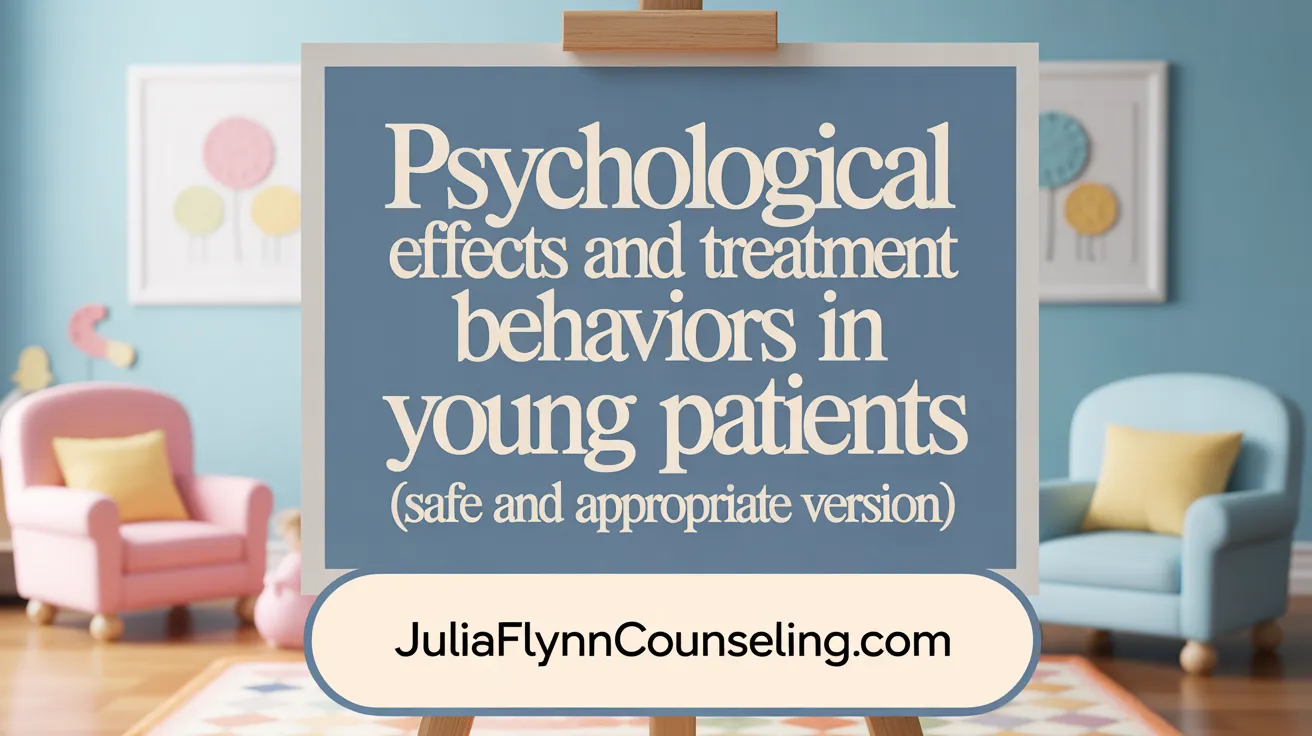
How does acne affect the emotional and psychological well-being of children?
Acne in children and adolescents can significantly impact their mental health and self-esteem. The severity of the condition often correlates with the level of psychological distress experienced. Severe acne tends to be associated with feelings of embarrassment, lowered self-confidence, and even social withdrawal. For many young individuals, acne is more than a skin condition; it can influence their body image and social interactions, leading to emotional struggles similar to those seen in chronic illnesses.
What is the rate of seeking professional treatment?
Despite the high prevalence of acne, many affected children and teens prefer managing their skin issues on their own. Studies indicate that approximately 73.3% of young people with acne handle their condition independently at home. Only about half of those with more severe acne actively pursue medical help. This suggests a substantial gap between the need for professional care and actual treatment-seeking behavior, often influenced by awareness, stigma, and access to healthcare.
Where do young people get information about acne and how do they manage it?
Most young individuals turn to dermatologists for credible advice, with around 54.9% citing them as their primary source. Others rely on the internet, family, and beauty salons for information. Common self-management practices include the use of cleansers, scrubbing creams, topical antibiotics, and, in more severe cases, oral antibiotics. However, a lack of comprehensive awareness often leads to ineffective or delayed treatment, emphasizing the importance of proper education and accessible healthcare resources for young acne sufferers.
Guidelines for Managing Acne in Children
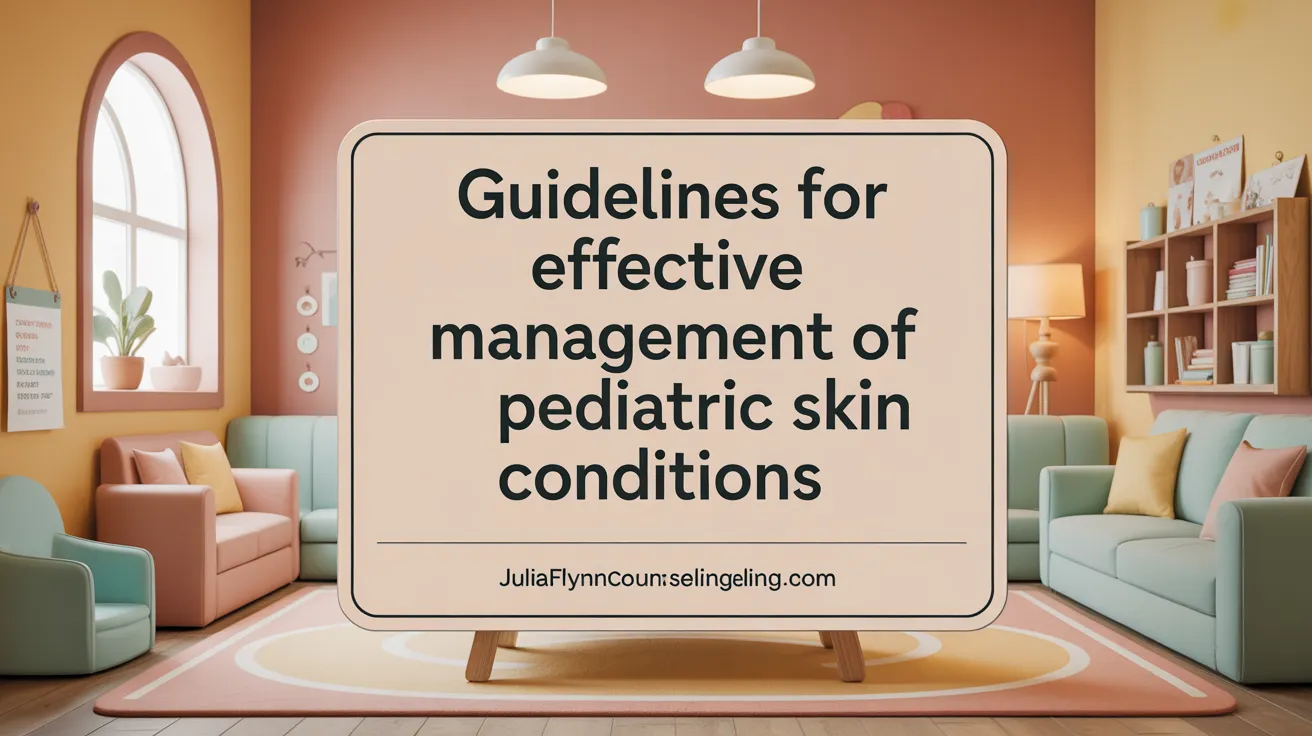
What are the guidelines for the treatment and management of pediatric acne?
Managing acne in children requires a tailored approach based on the severity of the condition and the individual patient's needs. The primary goal is to effectively clear the skin, prevent scarring, and reduce psychological impact, all while minimizing potential side effects.
For mild cases, topical treatments are generally recommended. These include benzoyl peroxide, topical retinoids, and sometimes topical antibiotics. These therapies aim to reduce sebum production, prevent pore blockages, and combat bacterial growth.
In cases of moderate acne, a combination of topical antibiotics with other agents such as benzoyl peroxide or retinoids is advised to prevent resistance and enhance effectiveness. When acne is severe or resistant to topical treatments, systemic therapies may be necessary.
Systemic options include oral antibiotics, which help target bacterial proliferation and inflammation. For refractory cases, isotretinoin can be prescribed under strict medical supervision, as it is effective but carries risk of significant side effects.
Hormonal therapies, such as oral contraceptives or spironolactone, are considered for females with moderate to severe acne, especially when hormonal influence plays a role.
Throughout treatment, monitoring for side effects and treatment efficacy is essential. The approach also considers psychosocial factors, as acne can significantly affect a child's self-esteem.
The guidelines, developed by experts and endorsed by organizations like the American Academy of Pediatrics, emphasize the importance of early intervention. Prompt and appropriate treatment can prevent illness progression and long-term scarring.
Use of topical and systemic therapies
Topical therapies are first-line treatments for mild to moderate acne, focusing on local control to minimize systemic exposure. Systemic therapies are reserved for severe, extensive, or resistant cases, requiring careful long-term monitoring.
Importance of early intervention and monitoring
Early treatment is vital to prevent scarring and long-lasting emotional impacts. Regular follow-up ensures treatment effectiveness and adjustment as needed. Education about acne management and lifestyle factors—including diet and skincare—also complements medical therapy.
By adhering to these guidelines, healthcare providers can improve outcomes for young patients with acne, addressing both physical symptoms and quality of life concerns.
Environmental and Lifestyle Factors Affecting Childhood Acne
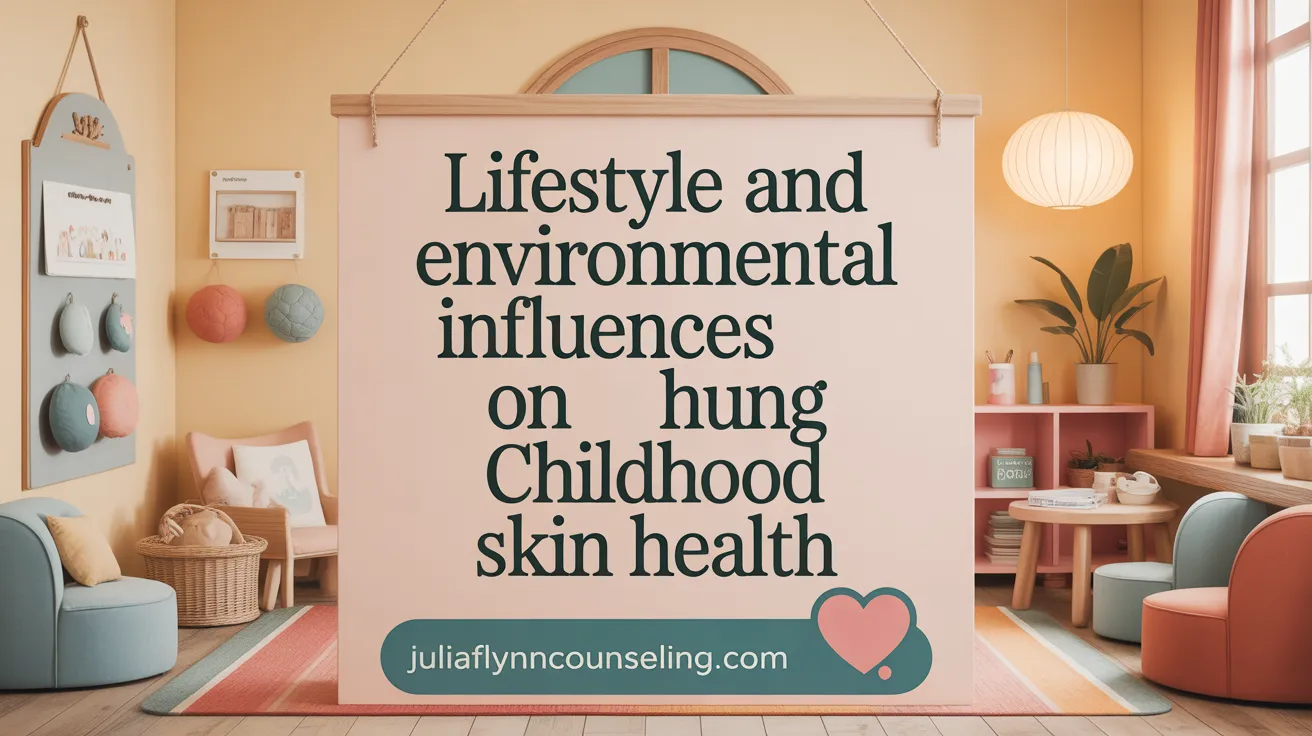
How do diet and lifestyle influence the development of acne in children?
Dietary habits are increasingly recognized as important factors in the development and severity of acne among pediatric populations. Consumption of high-glycemic foods and dairy products, especially milk, has been associated with an increased risk of severe acne. For example, regular milk intake has been linked to a higher likelihood of severe acne and poorer treatment outcomes in children.
Young individuals often attribute their acne to certain foods, such as fast food and chocolate, which are thought to provoke or worsen skin outbreaks. A significant percentage of teenagers with acne report dietary triggers, suggesting that lifestyle choices directly impact the condition.
In addition to diet, other lifestyle factors like stress levels and skincare routines also play a role. High stress can promote hormonal changes that increase oil production, leading to more acne. Poor hygiene, inadequate skin cleansing, or the use of pore-clogging skin products can exacerbate the problem.
External irritants such as oily hair products, cosmetics, or clothing that causes friction can irritate the skin and contribute to breakouts. External trauma and exposure to environmental pollutants further aggravate skin inflammation.
What factors influence the occurrence of acne in pediatric populations?
Various elements influence the likelihood of acne development among children. Hormonal fluctuations during puberty significantly increase sebaceous gland activity, leading to excess oil that clogs pores. A family history of acne, especially maternal history, is strongly linked to more severe cases, indicating a genetic component.
External conditions like high humidity, sweating, and skin irritation from clothing or hair products can foster an environment conducive to acne. The presence of bacteria, particularly different phylotypes of Cutibacterium acnes, also contributes to inflammation.
Certain medications, including corticosteroids and seizure drugs, may promote or worsen acne. Lifestyle behaviors such as poor diet, stress, and inadequate skin care further influence disease onset and progression.
External factors and medication influences
External irritants, like oily cosmetics and hair products, can block pores and cause inflammatory lesions. Medications such as corticosteroids have steroidal properties that increase sebaceous activity, thereby worsening acne.
In children with prepubertal acne, external factors may be even more impactful since the condition is usually more inflammatory and severe in these age groups.
Understanding these influences emphasizes the importance of holistic management. Adjusting diet, reducing external skin irritants, managing stress, and carefully choosing medications can significantly reduce the severity and improve outcomes for young patients.
Epidemiological Trends and Research Insights on Childhood Acne
Recent research highlights that childhood acne is a highly common dermatological condition affecting a broad age range and diverse populations. The annual incidence rate in children aged 7-12 years is approximately 58 per 10,000 person-years, with notable differences based on sex and age. Females exhibit a significantly higher incidence (89.2 per 10,000 person-years) than males (28.2 per 10,000 person-years), and the prevalence increases with age—rising from 4.3 at ages 7-8 to 144.3 at ages 11-12. In adolescents aged 12-20, prevalence can reach up to 93.2%, with mild cases constituting the majority, but a substantial proportion also experiences moderate to severe forms. About 14% of teenagers display moderate to severe acne, with a higher prevalence among those with a family history of the condition.
Geographically, the occurrence of acne varies. For example, in a study from Chandigarh, India, 72.3% of children aged 11-19 years were affected, predominantly in the 14-16 age group. In Turkey, a 12-month prevalence was 3.9% among children with atopic dermatitis, illustrating that comorbid skin conditions can influence acne occurrence.
The disease’s multifactorial nature is well recognized. Elevated androgen levels during puberty contribute to increased sebaceous activity. Genetic predisposition also plays a significant role, with family history—particularly maternal—being associated with more severe acne. Environmental factors, including diet (fast food and chocolates), and external trauma may exacerbate the condition.
Recent studies also demonstrate the impact of acne beyond physical symptoms, significantly affecting mental health and self-esteem, especially in more severe cases. The presence of inflammatory and comedonal lesions primarily affects facial areas, with the back often involved too. In some populations, prepubertal acne is observed, accounting for around 3.5% of cases, predominantly affecting females and presenting mainly with inflammatory and severe lesions.
Research findings underscore that early intervention and tailored management are vital. Poor response to traditional treatments has been linked to severity at presentation, higher BMI, use of other medications, and external lifestyle factors such as diet and skincare habits. The rising number of clinic visits and social discussions about acne reflect increased awareness and understanding of its complex, multifactorial nature.
| Aspect | Findings | Additional Details |
|---|---|---|
| Prevalence | Up to 93.2% in adolescents | Mostly mild, but moderate to severe presentations exist |
| Age | Incidence and severity increase with age | Significant in 11-12 years and older teens |
| Gender differences | Females more affected in childhood | Male prevalence increases in late puberty |
| Genetic factors | Strong influence | Family history linked to higher severity |
| Environmental | Diet and external trauma | Affect disease course |
| Impact | Mental health importance | Severity correlates with psychological and social effects |
| Treatment | Early, tailored management critical | Resistance linked to initial severity and lifestyle factors |
Understanding these epidemiological patterns helps clinicians better identify at-risk groups, plan preventive strategies, and provide more effective, personalized treatments for children and adolescents suffering from acne.
Summarizing Prevalence and Age Patterns of Pediatric Acne
Childhood acne represents a substantial dermatological issue beginning from early childhood and extending through adolescence, with prevalence increasing notably with age and reaching peak severity in adolescent years. The condition manifests variably based on hormonal, genetic, environmental, and lifestyle factors, with females showing higher incidence rates in certain age groups. Early recognition, comprehensive understanding of its age distribution, and adherence to evidence-based management guidelines remain crucial for minimizing long-term physical and psychological consequences. Continuous epidemiological research enriches our knowledge, guiding better clinical approaches to this common yet complex pediatric skin disorder.
References
- Acne incidence in preadolescents and association with increased ...
- Prepubertal acne: A retrospective study - PMC
- Acne in the Pediatric Population: Prevalence, Emotional Toll, and ...
- Prevalence, Severity, and Severity Risk Factors of Acne in High ...
- Adolescent acne: association to sex, puberty, testosterone and ...
- Epidemiological patterns of acne vulgaris among adolescents in North
- Acne Is More Common in Preadolescent Girls and Increases With Age
